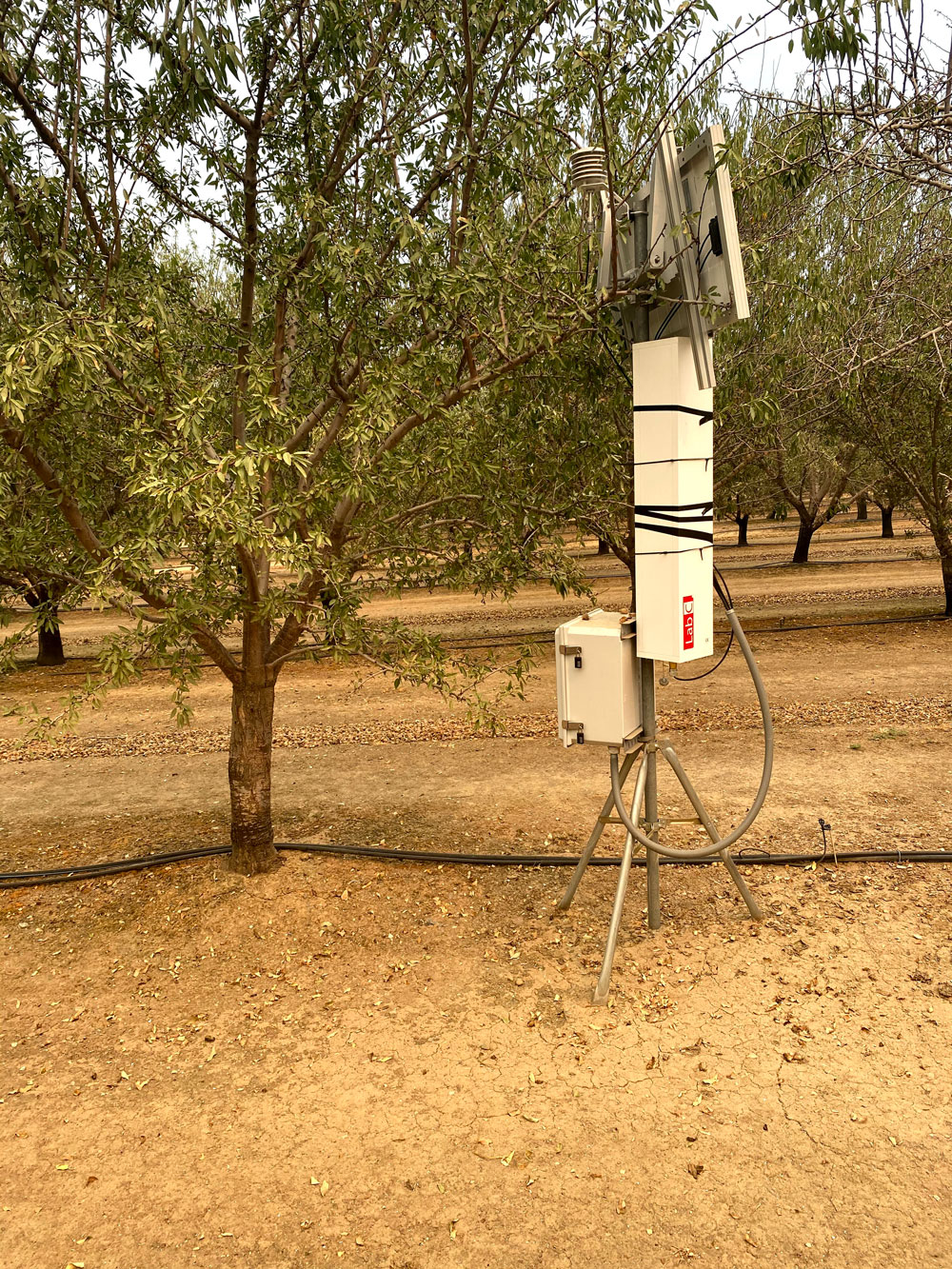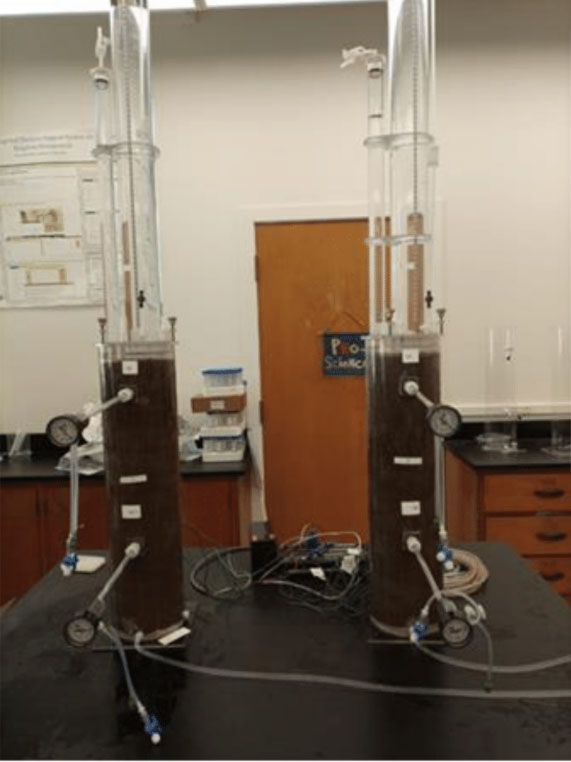
Tree nut growers seeking the ‘holy grail’ of plant water sensing have many options these days, but there is no one perfect sensor that will tell you when to irrigate, UC Davis Plant Scientist Ken Shackel said.
Shackel led a panel of speakers on irrigation technology and automated monitoring at the 2021 Tree Nut Conference held in Tulare. Speakers included UC Davis Irrigation Specialist Isaya Kisekka and Ryan Kaplan of Pressure Bomb Express.
Sensor Research
Shackel, who is researching the physiology of plant responses to water availability, said the current sensors available are direct, meaning they show the current stress level of the tree, and indirect, measuring shrinkage in a plant. The direct sensors (FloraPulse, Saturas, ICT) are all automated, and the pressure bomb also provides a direct measurement of stress. All are attempting, Shackel said, to measure how hard a plant is working to suck moisture from the ground. The indirect sensors measure shrinkage of a tree trunk, leaves or petiole. Others measure sap flow. Evapotranspiration sensors and temperature sensors measure water use or canopy temperatures. There are other automated devices, Schackel said, but differences between them make comparisons difficult.
“What you want to know is, is the information the sensors provide consistent and reliable and does it give you time to make irrigation decisions?”
Shackel’s research includes tree responses to water stress, drought and regulated deficit irrigation under field conditions. What has been learned, he said, is that just matching ET does not mean trees will be unstressed. Trees may use up the ‘easy’ water quickly and may experience stress at the end of each irrigation cycle. Daily sensor or pressure chamber readings on typical trees appear to be accurate enough to manage water for an irrigation block. Shackel said automated sensors have the potential to agree with the pressure chamber. Bottom line, Shackel said, is that plant-based irrigation may require more of a ‘response’ approach rather than a fixed schedule, especially if deficit irrigation is part of the plan.
An Almond Board of California-funded study on whole tree ET responses to mild and moderate water stress, done in Parlier with double line drip on deep and very well drained soils, showed that ET was closely matched with irrigation, but tree stress occurred.
Precision Irrigation Technologies
Kisekka said his research focuses on precision irrigation in nut crops with a goal of sustainable water use. His precision irrigation technologies can help tree nut growers reduce water-induced spatial variability in yield.
He is seeking to answer the questions of when to irrigate, how much to irrigate and where to irrigate- which is the precision aspect. Kisekka said growers can divide orchard blocks into small zones with similar soil characteristics with a challenge of developing an irrigation schedule for each zone.

Kisekka’s research has shown that some commercially available stem water potential sensors are accurate and produce similar data to the pressure bomb. In addition, some commercially available satellite evapotranspiration is accurate and can be used for site-specific precision irrigation management.
His recommendation is for growers to use a combination of stem water potential to determine the ‘when,’ soil water sensing to manage soil water depletion, and ET to determine how much water to apply to schedule irrigation for each zone.
In his presentation at the Tree Nut Conference, Kisekka outlined his research on soil water sensing and modeling, remote sensing of evapotranspiration and soil nitrate sensing.
Soil water status sensing and modeling involves spatiotemporal modeling of root zone soil moisture dynamics using machine learning and remote sensing. His goal here is to develop a method for upscaling point measurements of soil water to the block scale using machine learning.
With field scale sensing of soil water using a cosmic ray neutron probe, the goal is to evaluate the ability of the probe to accurately measure soil moisture at the orchard scale.
Kisekka said he also hopes to understand the impact of soil heterogeneity and soil amendments on infiltration and root water uptake.
His work in soil nitrate sensing involves sensor testing and evaluation in soil columns and deep vadose zone monitoring of nitrate before it reaches groundwater.
The goal of soil nitrate sensing is development of a low cost ion-selective soil nitrate sensor.
Streamlining Pressure Bomb Use
Kaplan, who also grows almonds, walnuts, pistachios and prunes, said he is building a game plan to streamline pressure bomb use. This will enable crop advisors to make recommendations based on inputs.
He is looking at how much to stress trees at different growing stages, including bud development and hull split. He also wants to account for “the rootstock effect” of smaller trees with fairly shallow root zones.

Cecilia Parsons
Cecilia Parsons has spent the past 30 years covering agriculture in California for a variety of newspapers, magazines and organizations. During that time she has been fortunate to witness some of the important events that have shaped this diverse industry and worked hard to examine and explain these events for readers.
When Cecilia first moved to the San Joaquin Valley in 1976, her first journalism job was at a small daily newspaper where she covered “farm news.” From there she branched out to writing for a dairy magazine and a regional weekly agriculture publication.
Cecilia is part of a farming family from the rural community of Ducor where she also raises purebred sheep and is attempting to master versatility ranch horse riding.










